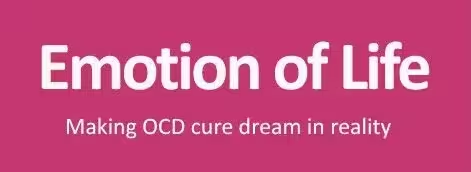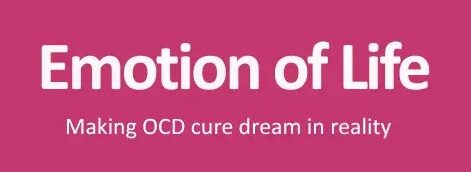Fear of staring private parts is a subtype of obsessive-compulsive disorder characterized by distress due to worries related to looking, the fear of having looked, or obsessive thoughts regarding eye contact. It can transform ordinary social interactions like waiting in line, greeting a neighbor, or conversing with a coworker into anxiety-inducing experiences, as individuals become overly concerned about how long they stared, whether their gaze was interpreted as threatening, inappropriate, or unusual, and what implications that might have for their character. This cycle often leads to compulsive behaviors such as checking, replaying social encounters in their minds, avoiding eye contact, or performing rituals to “correct” perceived social missteps. This is distressing because the mind exaggerates harmless thoughts about gaze into severe moral or social crises, perpetuating anxiety rather than alleviating it through compulsions.
Staring OCD treatment
Staring OCD treatment aims to disrupt this harmful cycle through evidence-based therapy and lifestyle adjustments that help restore confidence in social interactions. A crucial first step is realizing that thoughts about staring don’t represent one’s intentions or character; these are intrusions mistakenly labeled as threats. Therapy progresses from understanding these thoughts to taking action, teaching individuals to endure uncertainty regarding how they might be perceived, resisting the urge to seek reassurance or mentally rehearse interactions, and facing situations that invoke fear to demonstrate that the worst outcomes usually do not manifest. Gradually, individuals learn that their anxiety regarding gaze decreases naturally without compulsive behaviors.
Understanding Fear of staring private parts
Understanding Fear of staring private parts involves recognizing it as an anxiety-based misinterpretation of ordinary social cues. While most people glance and move on, those with Fear of staring private parts often feel doubt, “Did I stare too long?”, which spirals into catastrophic thoughts, like fearing they will be seen as creepy or hostile. This intense misinterpretation triggers defensive behaviors such as quickly looking away, avoiding further interaction, or excessively analyzing moments to reassure themselves. Although the specifics of obsessions may vary (such as fears related to sexual or aggressive interpretations), the underlying issue remains the intolerance of uncertainty regarding others’ perceptions of one’s gaze. Attempts to seek certainty through rituals is useless, perpetuating the disorder.
Symptoms of Fear of staring private parts
The symptoms of Fear of staring private parts typically begin subtly but can escalate and become intrusive.
- Symptoms blend obsessive fears with compulsive actions, such as replaying dialogues in one’s mind, timing eye contact, avoiding looking at others, frequently checking reflections, seeking validation from friends about one’s behavior, or engaging in silent mental rituals, like repeating a phrase to “neutralize” a glance.
- The emotional consequences can include shame, social withdrawal, increased self-consciousness, and often co-existing social anxiety or depressive symptoms.
- An individual might check mirrors after talking to someone to ensure they didn’t stare or compulsively ask friends if their gaze seemed inappropriate.
- They might avoid crowds to prevent unintentional prolonged eye contact or engage in internal rituals like counting seconds of eye contact or mentally reviewing facial expressions obsessively.
- Sleep can be disrupted by ruminating over social interactions, and focus at work may diminish due to persistent thoughts about perceived social errors.
- One may experience embarrassment, hyperawareness, and a shrinking social life.
It is crucial to identify these patterns early, as they can significantly damage relationships, professional performance, and self-esteem if left unchecked.
Triggers for Fear of staring private parts
Triggers for Fear of staring private parts relate to a mix of learned behaviors, and personal significance. Individuals differ in their sensitivity to social threats; those predisposed to OCD often have highly reactive systems that interpret ambiguous social cues as threats. Past experiences like an awkward interaction, bullying, or societal messages that sexualize the gaze can lead to attaching significant meaning to eye contact. Factors like stress, sleep deprivation, and major life transitions (starting a new job, parenting, ending a relationship) can intensify symptoms, causing situations that were once manageable to become obsessively scrutinized.
Impacts of Fear of staring private parts
The emotional and social impacts of Fear of staring private parts can be grave but are frequently underestimated, as behaviors may disguise themselves behind seemingly typical social habits. The impact is substantial like,
- Avoiding eye contact can weaken personal connections, replaying interactions can create dissociation from reality, and chronic anxiety about judgment can lead to loneliness and depression.
- Romantic relationships may suffer when one partner constantly seeks reassurance or avoids intimacy due to fear of eye contact revealing flaws.
- Professionally, an individual may shy away from opportunities like presentations or misinterpret neutral feedback as signs of failure.
- Over time, these consequences can create a reinforcing cycle that reduces social engagement and exacerbates anxiety.
Treatments for Staring OCD
Effective treatments for Staring OCD, delivered with consistency and compassion, primarily involve CBT and ERP.
Cognitive Behavioral Therapy (CBT)
This approach assists individuals in recognizing distorted beliefs surrounding eye contact, personal responsibility, and perceived social threats. Through CBT, those with Fear of staring private parts learn to counter destructive thoughts, such as believing that brief eye contact equates to perversion, by scrutinizing evidence and considering less catastrophic interpretations.
Exposure and Response Prevention (ERP)
ERP acts as the practical component, where individuals engage in feared situations maintaining normal eye contact or deliberately entering environments while resisting compulsive behaviors to demonstrate that anxiety can diminish naturally without rituals.
Acceptance and Commitment Therapy (ACT)
ACT offers a supplementary path by changing how individuals relate to their intrusive gaze-related thoughts. Rather than attempting to eliminate these thoughts, ACT promotes acceptance and strategies to view them as ordinary mental events rather than moral failures. It assists individuals in clarifying their values such as connection, kindness, and competence and committing to actions aligned with those values, even amid anxiety. For someone with staring OCD, ACT could involve practicing eye contact to foster authentic connections despite discomfort.
Wellness coaching
Wellness coaching is another key aspect often overlooked in treatment, focusing on enhancing daily routines to lower general anxiety, such as improving sleep, engaging in regular physical activity, maintaining balanced nutrition, and implementing mindfulness and breathing techniques for stress management. It also provides relapse prevention strategies and helps weave exposure practices into daily life. For instance, a coach may collaborate with an individual to arrange small, planned social interactions each week to gradually build comfort with eye contact while respecting life goals.
Personality dynamics course correction
Personality dynamics course correction such as perfectionism, intense feelings of responsibility, or fear of judgment can also help address the roots of staring OCD. Therapy examines how these traits emerged (influences from family, culture, or early criticism) and facilitates the practice of a healthier internal dialogue. An individual who correlates self-worth with flawless social experiences can learn to accept “good enough” interactions and develop self-compassion when social situations feel awkward. Correcting these personality traits diminishes the emotional fuel that perpetuates rituals and enhances long-term resilience.
Developing healthy coping skills
Replacing compulsive behaviors like checking and rumination with healthier coping strategies is crucial for effectively managing Staring OCD. Techniques such as grounding exercises, paced breathing, strategic mindfulness pauses, and designated “worry times” can help limit compulsive mental revisiting of situations. Behavioral replacements, like journaling thoughts about social encounters immediately after they occur to externalize the narrative, or practicing normal ranges of eye contact with trusted individuals and rating the discomfort, offer actionable tools. Over time, these coping mechanisms can weaken the link between eye contact and catastrophic thoughts.
Enhancing emotional and mental health
Enhancing emotional and mental health forms a broader therapeutic objective that encompasses addressing shame, building social confidence, and mending relationships harmed by avoidance or the need for reassurance. Group or social skills therapy provides a supportive environment for practicing eye contact without fear of judgment and receiving constructive feedback. Techniques for emotional regulation such as identifying feelings, using calming self-talk, and purposely redirecting focus can lessen the intensity of intrusive responses. Many find that as emotional health improves, the impact of staring-related obsessions naturally diminishes.
Self-help strategies to manage fears of staring others
Structured and consistent self-help strategies can complement professional treatment effectively.
- Daily mindfulness practice, even for just ten minutes, can diminish the tendency to ruminate, and gradual behavioral experiments such as practicing eye contact for five seconds in a public space can directly demonstrate that no disastrous outcomes follow.
- Social adjustments, like informing a trusted friend about the intention to practice eye contact, can foster accountability without making every social interaction feel like exposure work.
- Notably, successful self-help typically benefits from guidance to ensure the safety and appropriateness of exposure activities.
SUCCESS STORY of fears of staring others – I
Tia, a 27-year-old architect from Mumbai, was admired for her creativity but struggled with an invisible battle, staring OCD. What began as a small fear during college presentations worrying that she was “looking at people strangely”, grew into a full-blown disorder when she joined her first job at a leading architecture firm. Every time she spoke to a client or presented her design, she became hyper-aware of her eyes. She feared she might come across as impolite or intrusive. After every interaction, she would replay the conversation endlessly: “Did I stare too long? Did they notice? Did I make them uncomfortable?” These ruminations left her restless at night, and soon, insomnia became a regular problem.
SUCCESS STORY fears of staring others – II
Arun, a 33-year-old teacher from Bangalore, was passionate about shaping young minds. But when he developed staring OCD, his career and self-worth began to crumble. It started after an uncomfortable encounter with a colleague. One day, while lost in thought, he accidentally held his gaze a little too long, and the colleague gave him a strange look. From that moment, Arun’s mind latched onto the fear: “What if people think I stare at them inappropriately? What if my students or their parents misinterpret me?”
FAQ
How is Fear of staring private parts different from social anxiety disorder?
While social anxiety involves fear of being judged, Fear of staring private parts centers on intrusive thoughts about inappropriate or unwanted staring. The compulsions (checking, avoiding, replaying) are key signs that it is OCD rather than just shyness or social fear.
When should someone seek professional help for Staring OCD?
If obsessions and compulsions interfere with work, relationships, or emotional health or if shame and anxiety become overwhelming it’s important to seek help from our lead OCD therapist Mr. Shyam Gupta at Emotion of life.
CONCLUSION
In conclusion, overcoming Fear of staring private parts is an achievable and humane goal. With a compassionate, evidence-based approach combining CBT, ERP, ACT, wellness coaching, and practical coping strategies, many individuals can restore their social lives and confidence. Recovery does not necessitate perfect eye contact or the eradication of all discomforting thoughts; it involves developing the ability to tolerate uncertainty, diminishing the influence of intrusive thoughts related to gaze, and making choices that align with one’s values. If concerns about staring are constricting your world, reaching out for help at Emotion of life is a courageous first step toward regaining presence, connection, and freedom.


